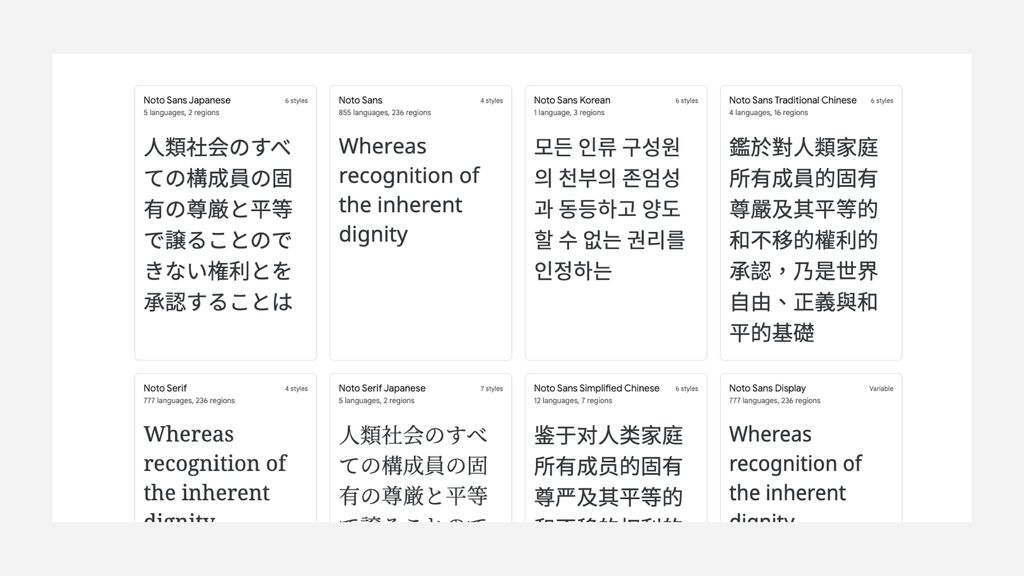
Typography plays a crucial role in branding, yet it is often overlooked. The choice of typeface and typography system can significantly impact a brand’s identity and user experience. In this article, we will explore the importance of typography in branding and provide key takeaways for creating a strong typographic foundation for your brand.
Key Takeaways
- Typography is an essential element in branding that can convey the personality and values of a brand.
- Choosing the right typeface is crucial in establishing a brand’s visual identity and creating a consistent brand experience.
- The psychology of typography, such as font styles and sizes, can influence how people perceive a brand and its messaging.
- Creating a consistent typography system ensures a cohesive brand presence across various touchpoints.
- Typography plays a significant role in digital branding, affecting readability, user experience, and brand recognition.
Typography: The Unsung Hero of Branding

Why Typography Matters in Branding
Typography plays a crucial role in branding. It is not just about choosing a font that looks nice; it is about conveying the right message and creating a strong brand identity. The typeface you choose can evoke different emotions and perceptions in your audience. It sets the tone for your brand and helps establish its personality. By using the right typography, you can make your brand more memorable and recognizable.
Choosing the Right Typeface for Your Brand
When it comes to choosing the right typeface for your brand, it’s important to consider the impact it will have on your overall brand identity. Typography plays a crucial role in conveying the personality and values of your brand. It is a strategic tool that can evoke emotions, establish credibility, and differentiate your brand from competitors.
The first step in selecting a typeface is to understand your brand’s personality. Is it modern and sleek, or traditional and elegant? The typeface you choose should align with the desired image you want to portray. For example, if you’re a tech startup aiming for a cutting-edge image, a clean and minimalist sans-serif font may be a good fit.
Another factor to consider is legibility. Your chosen typeface should be easily readable across different mediums and sizes. It should also reflect the tone of your brand. For a playful and friendly brand, a handwritten or script font might be appropriate, while a professional and corporate brand may opt for a clean and classic serif font.
In addition to the visual aspects, it’s important to consider the technical aspects of the typeface. Is it available in different weights and styles? Does it support multiple languages? These factors can impact the versatility and adaptability of the typeface for various branding materials.
Remember, the right typeface can make a lasting impression on your audience and reinforce your brand’s message. Take the time to explore different options, experiment with combinations, and seek feedback to ensure you choose the perfect typeface for your brand.
The Psychology of Typography in Branding
When it comes to branding, typography plays a crucial role in shaping the perception of your brand. The fonts you choose can convey different emotions and personalities, making it important to select the right typeface that aligns with your brand identity. The psychology behind typography goes beyond just aesthetics; it taps into the subconscious mind of your audience.
Typography can evoke specific emotions and associations. For example, a bold and modern typeface can communicate a sense of confidence and innovation, while a classic serif font can evoke a feeling of elegance and tradition. By understanding the psychology of typography, you can strategically choose fonts that resonate with your target audience and reinforce your brand message.
In addition to emotions, typography also affects readability and user experience. The right font size, spacing, and line height can greatly impact how easily your content is consumed. A well-designed typography system ensures that your brand’s message is clear and legible, enhancing the overall user experience.
To create a consistent typography system, it’s important to establish guidelines for font usage across different platforms and mediums. This includes defining font families, sizes, weights, and styles for headings, subheadings, body text, and other elements. Consistency in typography helps to build brand recognition and reinforces your brand’s visual identity.
When it comes to digital branding, typography takes on an even greater significance. With the rise of websites and mobile apps, the way your brand is presented on digital platforms is crucial. Typography plays a key role in creating a visually appealing and user-friendly digital experience. It helps to guide users through your content, highlight important information, and create hierarchy.
As with any design element, typography trends evolve over time. Staying up to date with the latest typography trends can help your brand stay relevant and fresh. Whether it’s experimenting with new typefaces, exploring unique font pairings, or incorporating dynamic typography effects, embracing typography trends can give your brand a modern and cutting-edge look.
In conclusion, the psychology of typography in branding goes beyond just aesthetics. It influences how your brand is perceived, communicates emotions and associations, enhances readability and user experience, and contributes to brand recognition. By understanding the power of typography and staying abreast of current trends, you can leverage this unsung hero of branding to create a strong and memorable brand identity.
Creating a Consistent Typography System
When it comes to creating a consistent typography system for your brand, there are a few key factors to consider. First, you need to choose a primary typeface that reflects the personality and values of your brand. This typeface will be the foundation of your typography system and will set the tone for all your brand communications. Consistency is key here, as it helps to establish a strong brand identity and creates a cohesive look and feel across all touchpoints.
Next, you’ll want to define a set of secondary typefaces that complement your primary typeface. These secondary typefaces can be used for headings, subheadings, and other design elements to add variety and visual interest. Variation in typography can help to break up content and guide the reader’s eye.
To ensure consistency, it’s important to establish guidelines for font sizes, line heights, and spacing. This will help to maintain a harmonious balance between text elements and ensure readability. Hierarchy is crucial in typography, as it helps to guide the reader’s attention and create a clear visual hierarchy.
Lastly, it’s essential to test your typography system across different mediums and devices. Adaptability is key in today’s digital landscape, where brands need to consider how their typography will appear on various screens and platforms. By testing and refining your typography system, you can ensure that your brand’s message is effectively communicated to your target audience.
Typography and Brand Identity
When it comes to brand identity, typography plays a crucial role in shaping how your brand is perceived. The fonts you choose can convey a sense of professionalism, creativity, or playfulness. They can evoke emotions and create a visual language that resonates with your target audience. By selecting the right typefaces, you can establish a unique and recognizable brand identity that sets you apart from your competitors.
Typography in Digital Branding
In the digital age, typography plays a crucial role in shaping a brand’s online presence. It goes beyond just choosing a font for your website or social media posts. Typography is the visual language that communicates your brand’s personality, values, and message to your audience. It sets the tone and creates a memorable impression. Whether it’s a bold and modern typeface or a classic and elegant one, the right typography can make a significant impact on how your brand is perceived.
The Impact of Typography on User Experience
When it comes to user experience, typography plays a crucial role in shaping how users perceive and interact with a brand. The choice of typeface, font size, and spacing can greatly impact the readability and legibility of the content, ultimately influencing the overall user experience.
Typography can evoke certain emotions and convey specific messages. For example, a bold and modern typeface may create a sense of confidence and innovation, while a classic serif font can evoke a sense of tradition and elegance.
In addition to aesthetics, typography also affects the usability of a website or application. Poorly chosen fonts or inconsistent typography can make it difficult for users to navigate and understand the content, leading to a frustrating user experience.
To ensure a positive user experience, it is important to choose a typeface that aligns with your brand’s personality and values. Consider the target audience and the context in which the typography will be used. A user-friendly typography system that is consistent across all touchpoints can enhance brand recognition and create a cohesive brand identity.
Remember, the typography you choose can make or break the user experience. So, take the time to carefully select the right typeface and pay attention to the details that can make a big difference.
Typography Trends in Branding
When it comes to typography trends in branding, staying up to date is crucial. Typography plays a significant role in shaping a brand’s identity and communicating its message effectively. Here are some key trends to keep in mind:
- Minimalist Fonts: Clean and simple fonts are gaining popularity in branding. They convey a sense of modernity and sophistication.
- Handwritten Fonts: Handwritten fonts add a personal touch to a brand and create a sense of authenticity.
- Bold and Dramatic Fonts: Bold and dramatic fonts make a statement and grab attention.
- Custom Typography: Brands are increasingly using custom typography to create a unique and memorable visual identity.
Incorporating these typography trends into your branding strategy can help your brand stand out and make a lasting impression on your audience.
Conclusion
In conclusion, typography plays a crucial role in branding. It has the power to convey a brand’s personality, evoke emotions, and create a memorable visual identity. The choice of fonts, spacing, and overall design can make or break a brand’s image. By understanding the impact of typography and utilizing it effectively, businesses can establish a strong and consistent brand presence that resonates with their target audience. So, next time you’re designing a logo or creating marketing materials, remember the importance of typography in shaping your brand’s identity. Don’t underestimate the power of a well-chosen font!
Frequently Asked Questions
What is the role of typography in branding?
Typography plays a crucial role in branding as it helps establish a brand’s personality, evoke emotions, and communicate key messages effectively.
How does typography impact brand identity?
Typography is a fundamental element of brand identity as it helps differentiate a brand from its competitors, convey its values, and create recognition and consistency.
What factors should be considered when choosing a typeface for a brand?
When choosing a typeface for a brand, factors such as legibility, readability, alignment with brand personality, scalability, and versatility should be considered.
How can typography enhance user experience?
Well-chosen typography can improve user experience by making content easier to read, guiding users through information hierarchy, and creating a visually appealing and cohesive design.
What are some current typography trends in branding?
Some current typography trends in branding include the use of bold and expressive typefaces, custom lettering and hand-drawn fonts, and the combination of different font styles for contrast and emphasis.
How can a consistent typography system benefit a brand?
A consistent typography system ensures that all brand communications have a unified and cohesive look, which helps build brand recognition, trust, and professionalism.

